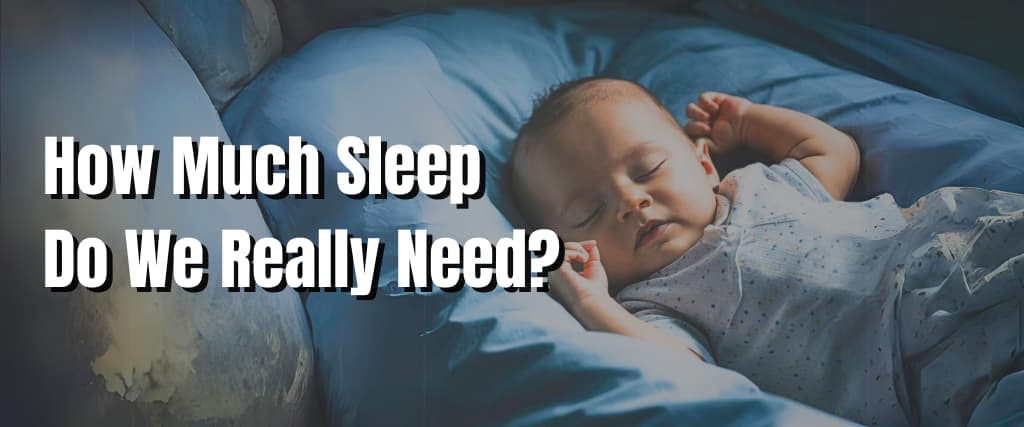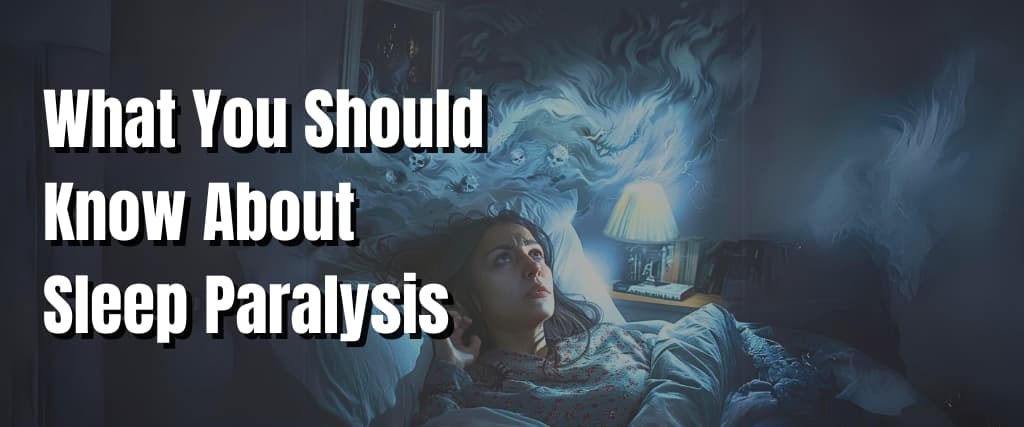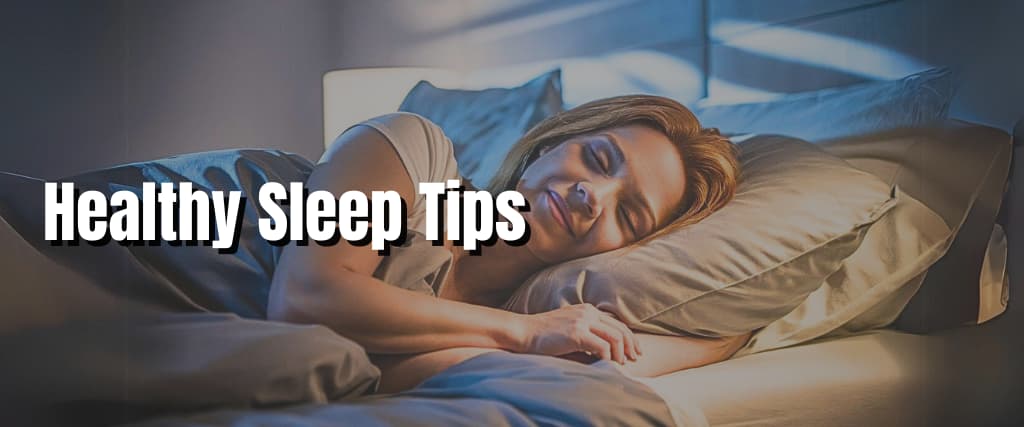Modern mattresses are carefully crafted to give your whole body the support it needs, and they also use cutting-edge technology to cut down on noise transfer between sleepers.
Also, they are hypoallergenic and resistant to bacteria, mould, and dust mites, so you can get a good night’s sleep without compromising your health.
While these features may sound obvious, most shoppers need help picking the best mattress that suits all their sleep needs.
This comprehensive guide will zero in on the essential features you need to consider while shopping for a mattress in an Australian mattress.
Understanding Mattress Terminology

Edge Support
Edge support prevents the mattress from sinking and falling to the floor while sitting on your bed’s edge. Likely, you’ll only roll off the edges in the midnight hours if the sides fall. There are a variety of approaches to take.
A thick foam coat (usually polyfoam) around the border can provide edge support. Manufacturers of coiled mattresses may position thicker gauged loops along the mattress’s perimeter to increase its stability.
Pillow Top
Pillow-top mattresses are bed frames with extra cushioning for the sleeper’s comfort. The unique tapering edge of a pillow-top bed makes it simple to identify from other mattresses. There is a sewn dip around the top of the bed, between the extra tape edge and the top. The resemblance to a pillow top is what gives the mattress its moniker.
Certifications
Bedding can be certified to assure buyers that it has been evaluated relatively by an independent body. When a producer makes a claim, you shouldn’t automatically accept it at the total price. The certifications a bed can earn attest to its high quality and purity. There are different mattress credentials, some of which are:
- Certified Organic Wool and Cotton (GOTS)
- Good Environmental Choice Australia (GECA)
- Centipur-US (for polyurethane foam that doesn’t include some dangerous chemicals)
- OEKO-TEX (for textiles and leathers that don’t comprise specific toxic substances).
Firmness
The initial sensation felt while lying down on a mattress is a good indicator of its firmness. The fabrics may feel like they are pressing back against you or moulding your flesh, or you may feel like floating on the bed’s top or sinking into it. These are some examples of queries you might have to identify a bed as soft, medium-firm, or firm.
The “firmness scale,” often ranging from 1-10, is used by the mattress business to help customers figure out the degree of firmness in a given bed. One out of ten mattresses is seen to be the softest, whereas ten out of ten mattresses are thought to be the firmest. A rating of 6.5 is generally accepted as the benchmark for medium firmness.

Mattress Topper
A mattress topper can significantly alter the feel of a mattress and increase the amount of pressure relief it offers. In addition to giving a new bed a second wind, toppers may make a used one feel fresh for longer.
A topper is a viable option for a variety of reasons. Maybe you and your spouse have very different comfort and support demands; perhaps you’re trying to make your bed last longer, or you just like how a thick luxury layer feels. A bed pad or topper could be a simple and cheap solution to your sleep issues, regardless of the cause.
A mattress topper’s average softening or firming effect is between 10 and 20%. A high-quality topper will allow air to flow into your bed, adding comfort and boosting the mattress’s efficiency.
Mattress Protector
Use a bed protector, an additional sheet or a pad to keep the mattress free from spills and other marks. Many are watertight, which is excellent for anyone with bladder issues, while others possess anti-allergen characteristics to help people with asthma or allergies to dust mites or bed bugs.
A high-quality protector will shield your mattress from wear and tear without reducing its softness or comfort. You should seek one that satisfies your requirements, such as being made of a breathable material or being able to accommodate a thicker mattress.
Choosing A Mattress Properly

Understanding Mattress Types
Lifespan
Mattresses wear out over time. After some time, they will no longer give your body the necessary support. Although a bed of lesser quality may last up to two years, a high-grade one should serve you well for at least seven years, ideally ten.
Invest in “what distinguishes you from the floor,” as the adage goes, particularly tires for automobiles, footwear, furniture, and mattresses. They keep you off the floor for as long as ten years (or more!) and eight hours a night.
But this does not imply that a good bed must be expensive. In other words, even if the asking price at Walmart seems incredibly enticing, it may be worth paying slightly beyond your budget to acquire the perfect mattress.
Mattresses range in price because of variety. Talalay latex is typically more expensive than Dunlop latex. If you like a firmer mattress, look at the Dunlop variety rather than Talalay latex alone.
Most latex foam mattresses provide both features, but this is one example among many. You shouldn’t buy a mattress based only on price, but you shouldn’t buy a cheap mattress because it’s inexpensive.
Experts recommend shopping for the bed “solution” that suits your needs and budget. Determine how much money you have and how much you want to spend on a bed without compromising the crucial features of a bed.
Materials
In the past, manufacturers commonly used straws to make beds. However, today mattresses can be found in various materials, from latex and springs to synthetic foams and even air. Most modern mattresses are made up of multiple layers that all work together to provide you with comfortable support.
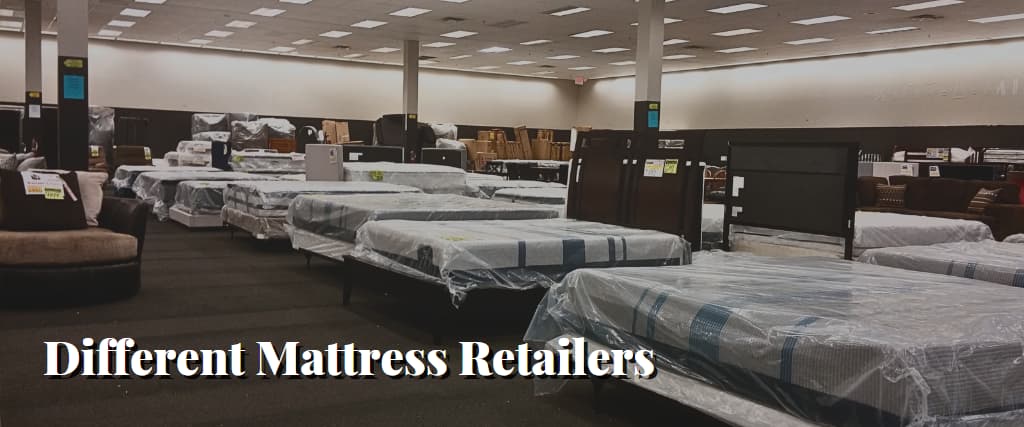
Different Mattress Retailers
You can resort to investigating your choices in a few different locations.
Offline
While shopping for a new couch or bed, you typically visit a department store or a specialised retailer. Ikea, Harvey Norman, Freedom, and well-known mattress retailers like Forty Winks and Snooze, provided sleep surfaces. They allow you to quickly try out several different bed brands, allowing for direct comparisons.
Visit their showrooms to get a feel for the sizes of the mattresses on display, the colours of the bed frames, and how the various pieces of furniture might work together to create a cohesive bedroom ensemble.
Some people, however, would rather not have a salesperson constantly looking over their shoulders, especially if they are shopping with a companion and would like to share their honest thoughts on each bed with only that person. Although you can lay down on the available mattresses for a little while, you will need a better feel for their comfort.
Once a mattress has been bought, most businesses will only accept it if the customer changes their mind. You’ll be effectively guessing if a five-minute nap is the best option because you can’t compare it to a whole night’s sleep. It’s safe to say this is a guess, but it’s still a gamble.
Online
Online marketplaces are quickly becoming the norm for consumers worldwide. You can look through all of the available bedding stores at once with the push of a mouse.
You are not restricted to just mattress shops. Marketplaces like eBay, Amazon, Catch, etc., are plentiful.
Undoubtedly, there is always a chance of something going wrong. This is the first time you have seen something like that. The sensation is foreign to you.
While reading customer reviews might help, buying bedding online still involves more risk than shopping at a brick-and-mortar store.
Beds cannot be returned or exchanged for a different size or firmness for most online merchants and websites. There is a tiny window of opportunity for this, and the bed must be unopened and in its original state to qualify.

Mattress in a box
The introduction of the bed in a box completely changed the landscape of the mattress sector. Several of these names may be familiar: Ecosa, Koala, and Sleeping Duck.
What, then, is a mattress in a box, and how is it different from a traditional bed? A mattress in a box sounds precisely like a bed enclosed in a container.
Customers who order a mattress online may expect to receive it in a box, compacted and folded, and delivered to their home, often at no cost. You bring it inside, unpack the mattress from its packaging, and let it deflate before getting some shut-eye.
These businesses typically have lengthy trial periods, sometimes reaching an entire year, after which you may send the bed back for a full refund if you don’t like it. Because of this, you won’t have to worry about making a poor purchase decision because the bedding manufacturer is taking on all the risk. That way, you can make an informed choice after a good night’s rest.
The most significant drawback to online mattress stores is that you need to try out the various mattresses in quick succession. There is less guesswork when comparing and contrasting prices and features when shopping, as everything is laid out side by side. Yet, a recent report from Choice magazine found that bed-in-a-box beds are on par with, if not superior to, those found in brick-and-mortar stores.
Warranty
A manufacturer’s warranty promises to fix or replace a defective product free of charge within a specific time frame. Mattress guarantees can be anywhere from one year to ten years. It shows the company’s confidence in the bed’s durability and quality. A company aware that its bed will only last a year wouldn’t be foolish enough to guarantee it for ten years and risk having to replace it that many times.
Transparency
Before spending your money, you must know what you’re purchasing. But, if you need to learn how to distinguish between foams of varying quality visually, you’ll have to take the manufacturer at their word. They are not transparent if they refuse to answer your queries or provide clear explanations.
It’s frustrating when there’s a need for more explicit information, and comparing mattresses side by side needs to be firmer. Know what you’re receiving before shelling out hundreds of dollars.

Sleeping Positions
Understanding your preferred sleeping and waking positions will help you decide on a mattress. Depending on how you usually lay in bed, your neck, shoulders, or back may need extra support to keep your spine in its proper position. That’s why it’s essential to consider your preferred sleeping position when shopping for a bed.
Back Sleepers
The lower back suffers the most stress when a person sleeps on their back. By sleeping on an overly soft mattress, the body might form a U-shape that puts extra pressure on the lower back and pelvis. A substantial bed will not allow your body to relax into its natural sagginess, a curve in your lower back. Sleeping on one’s back is best accommodated by a firm or medium-firm mattress, with little to no contouring.
Side Sleepers
The shoulders and hips, the two broadest parts of the body, take the brunt of the pressure when a person sleeps on their side. A too-soft bed will cause those vertebrae to sink out of alignment with the remaining spine.
Too much firmness in the mattress will cause pressure, leading to pain and possible misalignment. Soft to medium-firm beds are thus recommended for side sleepers.
Stomach Sleepers
Like back sleepers, those who prefer to lie on their bellies put the most strain on their lower backs. They can significantly benefit from firm mattresses, which prevent them from forming a U and feeling suffocated when lying on their backs.
Combination Sleepers
Most people toss about while sleeping, which could be a problem, especially if people share a bed. In most cases, people should select a bed based on the sleeping position that suits them best.
If you can’t decide on a preferred sleeping position, you’re safest with a mattress in the medium-firm range. A bed allowing quick and effortless transitions between parts is ideal for these sleepers.
Hot sleeper
You are a “hot sleeper” if you tend to get too warm during the night and find that it prevents you from getting quality rest. Possible causes include hypoglycemia, hormone imbalances, and other similar conditions.
If you tend to sleep hot, you shouldn’t put hope in a new mattress to solve your problem. Sleeping on a thick bed keeps your body heat trapped all night. For this reason, spring beds, which contain air between their coils, are preferable.
Weight and Shape
A person of average weight will sink less profoundly into a bed than someone heavier. Heavy people (cupped in the surface) will sense a softer top than a lighter individual (more exposed to the surface). A curvy body type will benefit from a more even weight distribution throughout the body to better align the spine.
In this technique, the bed can adequately support the person’s waist as their shoulders and hips descend into it. You must ensure your bed is the right size because people come in many sizes and shapes.
Partner Disturbance
Most people sharing beds are disturbed by the movements of their spouse, even the minimal activities. Some even find it difficult to go back to sleep after such disturbances, staying awake until the following morning.
Save your marriage from your partner’s restless movements with a mattress that reduces motion transmission. Instead of investing in a Bonnell Spring mattress, try form mattresses (like memory foam) to help you and your partner get some shut-eye.
Shortlist
You should have a clearer picture of the features you seek in a mattress and the faults you wish to avoid. Putting your ideas down on paper may be helpful. Write down your sleeping habits, your anticipated lifespan for the mattress, and the materials you’d choose.
Make a note of whether or not the bed’s hypoallergenic quality or its environmentally friendly construction are particularly significant to you. You can quickly narrow your options to just the suitable beds by listing your needs and preferences.
The next step is, of course, to start searching. Find out what’s out there by following your findings as a map. You can use a spreadsheet. The advantages and disadvantages of each bed will be immediately apparent. You may quickly identify the mattresses that fall short of your needs and those that meet them all. You’ll be down to a select few options before long.
Testing the mattress
There are various ways to try out a mattress, some exclusive to the store where you plan to purchase. Ensure you and your bed-share partner try all the features before committing to them.
Take your time and pay close attention to any tender spots or areas of discomfort. If you do not have a partner, bring a buddy so they can observe your posture and make sure your spine is linear. To learn more about the characteristics to seek, visit this link.
Mattress Types
The sheer variety of mattresses available nowadays could overwhelm you if you’re in the market for a new one. Consider the many kinds of beds available as a starting point.
There are typically only five distinct categories of mattresses available today: foam, innerspring, hybrid, latex, and airbeds. The most common type of mattress in American homes is the innerspring variety. Other kinds of beds, however, have become increasingly common in recent years.
These alternative mattresses have become increasingly popular since they function better than conventional ones. The expansion of the internet mattress market has also lowered their prices and made them more widely available.
You may build a solid foundation for the bed search by learning the fundamentals of each category.

Innerspring Mattresses
Most standard innerspring mattresses have three layers max. Typical construction includes a spring coils layer and an additional foam quilted layer. This is especially true for beds with an extra layer of surface foam, such as pillows and Euro tops.
Most people find innerspring beds’ comfort and edge support the best overall. An innerspring mattress has spring coils that provide a modest but detectable resistance as you lie on it. This is what gives the bed its springiness.
Innerspring mattresses have the best edge support because the springs prevent the mattress from collapsing or sinking if you get close to the side of the bed. Together, they enable an innerspring bed to be more convenient for switching positions while sleeping and getting in and out of during the night.
Despite its usefulness, there are a few downsides to these similar qualities. The drawback to the innerspring’s reactivity is that motion can transmit to your sleeping companion too quickly, disrupting both of your nights. It’s also worth noting that innerspring beds aren’t great at conforming to the shape of your body. As a result, they could be better at relieving pressure than other mattresses.
Pros:
- Solid edge-support
- Super-responsive
Cons:
- Poor motion isolation
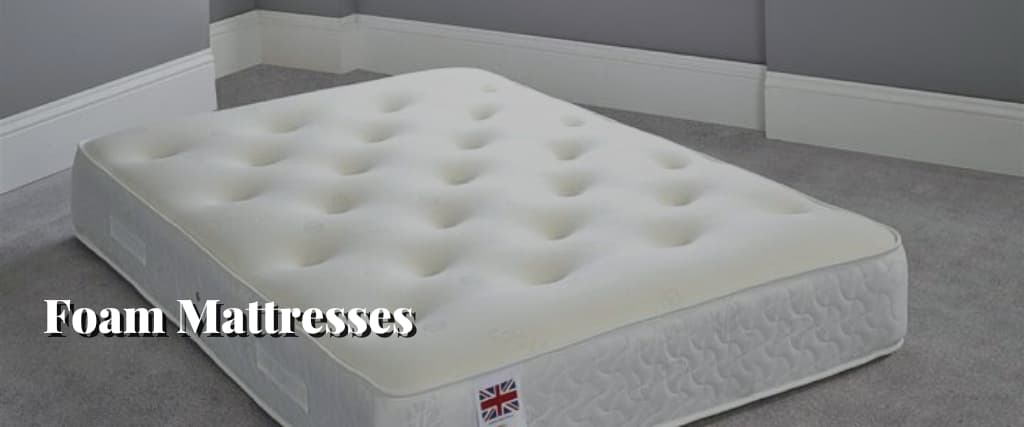
Foam Mattresses
Foam beds are becoming more and more popular in recent decades. These mattress designs are now more widely available and reasonably priced due to the growth of the mattress-in-a-box industry and companies like Nectar. Although not all foam beds are identical, foam mattresses usually have the most straightforward construction.
Most foam mattresses have several layers that get denser as they go down. This typically has at least three layers—a foundation foam, a core foam, and a top foam.
No mattress relieves pressure better than form mattresses; they have contouring comfort. Moreover, foam mattresses typically provide the finest motion isolation, which is advantageous if you share a bed with a light sleeper.
On the flip side, the foam could be more responsive. Foam beds may make you feel like you are falling too deep into the bed. Furthermore, foam mattresses frequently provide lesser edge support than other beds.
People frequently complained that foam mattresses trapped too much heat, making them uncomfortable. But, recent adjustments from different manufacturers have addressed this problem by incorporating cooling gel components, moisture-wicking coverings, more excellent ventilation, etc.
Pros:
- Superior pressure relief
- Remarkable motion isolation
Cons:
- Poor edge support
- Less responsive
Hybrid Mattresses
The most recent mattress types are hybrid. These mattresses often include pocketed coils in the middle of plush topping and firm base foam. Contrary to the coils in innerspring beds, the pocketed coils are wrapped individually in fabrics.
Most hybrid models aim to balance out the many benefits and drawbacks of innerspring and foam beds. As a result, they typically offer a reasonable compromise between the merits and cons.
Hybrid beds typically provide superior pressure relief and motion isolation than most innerspring models because of their additional foam layers. Moreover, they feature more robust edge support over foam beds and are typically more responsive due to the pocketed coils.
Pros:
- Better pressure relief
- Superior isolation
Cons:
- Less responsive
Firmness
It’s essential to pick a bed that feels appropriate to you because comfort is a personal experience.
“firmness” refers to how firm or squishy a bed feels. Experts employ a firmness rating of one to ten to measure the choices. Although it isn’t entirely scientific, it does assist in describing how a bed feels and the potential target audience.
Although the chart shows who gains the most from each firmness degree more often, remember that comfort is a personal preference. Some folks merely like a firmer or softer mattress or may have additional factors — including hip or back pain — that impact what bed feels comfortable.
If you’re not confident about what firmness degree is ideal for you, there are some ways to assist in determining what could be the most excellent fit:
- You can narrow the possibilities by thinking about your weight and how you lay in bed.
- Think about the last time you slept on your existing hotel bed and whether you desired a firmer or softer surface. For perspective, most resort beds are medium to medium-firm with the most significant visual look.
- Try a few different mattresses for study and visit a local bed store. Spending at least ten to fifteen minutes on a mattress is essential to get a feel for how it feels throughout the night.
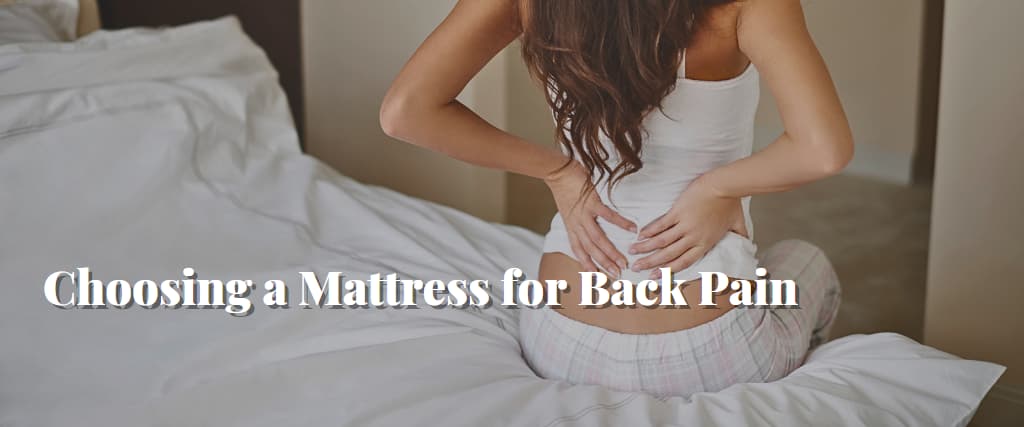
Choosing a Mattress for Back Pain
A non – supportive bed is just one of many potential sources of back discomfort, and you shouldn’t ignore it. Those who don’t already have chronic back pain may be able to avoid pain with the perfect bed’s supportive properties, while those who do may find relief in the mattress’s cushion qualities.
To select the most suitable mattress, back pain sufferers must consider their symptoms and individual preferences and needs. Some cases of back pain are temporary and abrupt in onset. Pain that is severe and suddenly frequently occurs in the back is called acute back pain.
Sometimes the discomfort lasts long, and doctors label it chronic back problems. Injury or illness can cause a sudden onset of back pain that can progress into a chronic condition.
Sometimes the only thing that can help someone with severe back pain is to change positions on the bed. The person may need to prop themselves up with more pillows or change how they sleep. More drastic measures for persistent back pain might be required, like picking a firmer or softer bed. Finding the optimal level of comfort and pressure relief can aid in maintaining correct spinal alignment while you sleep.
An individual thinks pain in their back may also play a role in determining the best mattress for them.
Lower Back Pain
Lumbar region pain affects the five lowest spinal discs (L1-L5). It accounts for a large percentage of all cases of back pain and visits to doctors across the United States. Stretching at this area of the back strains the muscles and spine.
Back pain is a common complaint among those who suffer from the effects of a poor sleeping position. This can happen to people who sleep on their sides if they don’t correctly support their shoulders and hips, which can cause a chain reaction that affects the entire spine. Whether you sleep on your back or stomach, you may have this condition if your mattress is either soft or too firm and causes stress on your lower back’s natural curve.
Mattresses ranging from medium-firm and firm to Medium are best suited to absorbing people’s impact when they sleep on their sides. Beds ranging from Medium Firm to Firm, with mild contouring, are best for stomach and back sleepers.
Middle and Upper Back Pain
Pain in the upper and middle spine is much rarer. Sprains and strains are less likely due to contorting moves in these areas because of the region’s different stable physiology. Pain in these locations can be connected to more significant disorders and should be examined by a physician.
In some circumstances, poor posture might produce unnecessary tension in the upper and middle back. The likelihood of experiencing this kind of pain is diminished by sleeping on a pressure-relieving bed that aids spinal alignment. A good pillow with the perfect loft may also guarantee proper head, neck, and upper back support.
Body Types
The ideal mattress for spine support, convenience, and other aspects depends on several factors, including body shape, sleeping position, and weight.
Due to their smaller frames, people under 130 pounds are less likely to sink as deeply into a mattress. A softer bed may give them the necessary contouring if they slumber on their side and have very prominent pressure points. Foam or hybrid mattresses are preferable to innerspring mattresses, which don’t work well for most people.
Expert recommends that the bed firmness be based on your sleeping position, weight, etc. You can choose the best mattress from hybrid, foam, and latex models for your needs and preferences.
A person weighing above 230 pounds may have an abnormal sinkage into the bed, particularly at the hips and shoulders, which may cause spinal misalignment. Mattresses with a bit more firmness can help those with this problem have a better night’s sleep.
Those who weigh more than 230 pounds may benefit from a more responsive mattress because it makes it less likely that they will feel trapped in the bed. Most responsive materials are latex or hybrid varieties.
Even the most lightweight sleepers should prioritise a mattress that will last as long as possible, and those weighing more than 230 pounds should pay special attention to the bed’s top layers’ stability. Because of this, those who tend to sleep on their stomachs choose mattresses with a deeper comfort system made from high-density fabrics.
The perfect mattress depends on more than simply your weight. Those who sleep on their sides, especially those with wider hips and shoulders, may benefit from a soft bed with excellent contouring. Those tall, above six feet, should pay special attention to the measurements of mattresses to ensure they have enough space to move around freely.
Pricing
A mattress is an invaluable asset in your health because it is the one furnishings item you are almost sure to utilise most. Consequently, a bed is expensive and should be a primary consideration.
Planning up a total budget for your bedroom is a helpful activity. This covers buying a new bed and any additional bedding items that might be required.
Mattresses can be found in a wide price range, from dirt cheap to astronomically expensive. Once you account for these extremes, the average price of a bed is between $600 to $2,000.
Higher price tags are usually associated with more features and better designs for mattresses. However, there are better options than a more expensive bed. The cost of a bed may be affected by a few different variables:
Material and Construction
The components and level of craftsmanship and quality used to make the mattress account for a large portion of the total cost of a new bed. The price of a hybrid bed, which combines innerspring coils with foam, is typically higher than that of an equivalent mattress made entirely of foam.
Luxury or specialty mattress materials, like latex, can double or even triple the price of a regular memory foam mattress. The cost of a bed, even an all-foam one, can vary widely from one manufacturer to the next. Memory foam and other specialist materials, like copper-infused foam, can increase the price of a bed by hundreds of dollars, while polyfoam is quite affordable.
Mattress Size
The cost of a mattress increases proportionally with the increase in its dimensions. Beds with a smaller area, such as Twins, typically cost roughly half as much as larger ones, like King-size mattresses. Mattresses of less standard sizes, such as the California King or the Twin XL, can cost more than their standard-sized counterparts.
Brick-and-Mortar Stores vs. Online Stores
Although it makes sense to buy a mattress from retailers who allow you to try it out firsthand, it will almost always cost you more money. According to a Consumer Reports probe into mattress businesses, customers pay up to $3,000 for a bed that only costs the manufacturer $300 to produce. Because of their cheap operating expenses, online mattress stores may offer substantially lower profit margins. You may save a significant amount by purchasing your mattress online.
Warranty and Return Terms
In addition to the standard product warranty, most retailers and manufacturers will accept returns on new beds. Often, longer guarantees will result in a higher up-front investment due to the added time and labour involved in the warranty process.
Other Factors
- Brand: Mattress, like the great majority of retail goods, luxury-oriented brands naturally command a higher price point.
- Shipping and Setup Costs: You may be responsible for the cost of delivery, and in-home installation, based on where you purchase your mattress. The shipping cost can be anywhere from $50 to $100, but white-glove home deliveries cost much more. Some stores will even pick up your old bed for an extra fee. Many stores now offer free shipping, making comparing prices easier.
- Foundations and Accessories: The total cost of a mattress setup includes the bed and any other attachments you might want or need. Even seemingly insignificant purchases, such as sheets, can quickly add up to the price of a new foundation.
These extras can add a significant amount to the final price of a bed. Still, the cost of a larger bed also typically brings a heftier price tag for its accompanying accessories. Fittings for uncommon sizes, such as the Twin XL and the California King, can take a lot of work to come by and cost more money.
Choosing a Mattress for a Kid
Children require sufficient amounts of restful sleep. They have a more significant nocturnal energy expenditure than adults, and good sleep hygiene is crucial at every developmental phase. Giving kids a good night’s sleep begins with a good mattress.
There are many similarities between what an adult needs in a bed or mattress and what a youngster needs.
While looking for kid’s beds, particularly cribs for infants, safety is a much bigger deal. The mattress must adhere to all applicable safety standards.
The bed is a different size as well. Children are more likely than adults to outgrow their mattresses, so selecting the right bed size is vital to anticipate their future height and weight.
A child’s ability to sleep in a bed meant for an adult of a smaller size depends on their maturity level. A child-sized mattress is a good option for some families, but parents may want something more conventional in others. Adults have a greater variety of bed styles, models, and manufacturers from which to choose.
Another area of potential disagreement is the going rate for a child’s bed. Many children’s beds are narrower and shorter, which reduces the number of materials needed and hence the price. On the other hand, many children’s mattresses come with as many bells and whistles as an adult bed and can cost as much as one.
How to Choose a Crib Mattress
A crib mattress is a necessary purchase, and there are a few things to remember before making your final decision. While shopping for a crib mattress, safety should always come first. Essential features of a secure crib bed are:
- Check with the CPSC to ensure no excess lead or other substances are in the crib mattress.
- Ensure the mattress fits in a full-size crib by verifying if it conforms to CPSC standards for mattress sizes. That’s a minimal 27.25″ x 51.25″ (inches) in dimensions. The maximum acceptable thickness is 6 inches.
- You can mitigate the danger of SIDS by using a firm mattress in the baby’s crib.
- You should not place blankets, toys, and pillows on the mattress. Babies shouldn’t have anything soft or loose in their cribs since it increases the danger of smothering and sudden infant death syndrome.
You should evaluate crib mattresses for more than just their safety; their practicality and comfort are also important considerations.
- Ease of Cleaning: A crib mattress will get dirty frequently; therefore, it’s great if the design facilitates thorough cleaning. Some crib beds, for instance, are constructed with either a watertight cover (often fashioned from vinyl) or a watertight base. Many parents appreciate the ease with which you can clean these elements.
- Weight: Lighter beds, such as ones constructed of foam, may be preferable because you might have to lift the crib bed for cleanup.
- Mattress Type: You can get a firm mattress with either foam or springs, which are great choices. Crib beds can also be purchased from select retailers and made from various non-standard materials and components (and even with an eye toward sustainability, in the case of some brands).
- Reversible Firmness: The crib bed can be flipped to enjoy a new texture. You may get extra use out of bed by flipping it over when your child grows and no longer requires the same level of firmness.
How to Choose a Mattress Topper
A mattress topper is an extra layer placed over your existing mattress and covered by a fitted sheet. If modifying the bed’s firmness is your top priority, this may be your best option. Depending on the type of topper you choose, you may also benefit from the additional motion isolation, contouring, or bounce you didn’t have before.
Most mattresses have a topper on top, and those toppers are typically between 1 – 4 inches thick and made from one substance. Memory foam, latex, polyfoam, cotton, polyester, down, and wool are all materials found in toppers.
Many of the same considerations that go into buying a new mattress are also relevant when picking out a mattress topper:
- sleeping position
- body shape
- preferred firmness
- The ideal materia that best suits your needs
- Your budget
Finally Selecting!
Nothing else needs to be added to your list. You’ve now slept on each of the finalists. You have eliminated all except the best candidates.
Finding the right bed “system” that best fits your body and budget is the most critical factor in selecting the right bed. If all of the mattresses that made it through the evaluation phase are equally comfy, then the winner is the one that costs the least.
When Should You Replace Mattress
If it causes you pain in the morning, it’s not a good sleep surface. If you can tell it’s sagging, throw it out. For some time now, it hasn’t been backing you up. Invest in a mattress that will allow you to sleep soundly without fear of regret. The correct bed may do wonders for your well-being. This is money well spent on yourself.
Final Thought
Getting a good night’s sleep and improving your overall health and well-being depend on picking the right mattress. It’s essential to consider your sleeping habits, body type, and preferences regarding firmness and material while shopping for a mattress. Be sure the mattress you choose provides the right amount of comfort and support by trying out a few options in the store or taking advantage of a trial period.
You can improve the quality of your life by investing in a high-quality mattress if you have trouble sleeping, experience chronic pain, or are otherwise unable to enjoy a good night’s rest. If you want to get a good night’s sleep without sacrificing comfort, it’s essential to shop around for mattresses until you find one that works for you.




